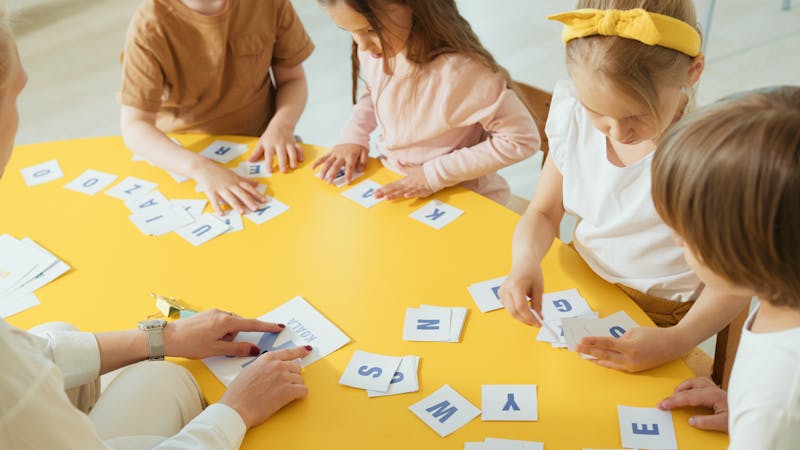
Educational Bingo: Making Learning Interactive and Fun
Educational Bingo: Making Learning Interactive and Fun
Transform your classroom or training environment with educational bingo! This versatile tool turns passive learning into active participation, helping students and trainees engage more deeply with content while having fun.
Why Educational Bingo Works
Active Learning: Students must listen carefully and process information to identify bingo items Increased Engagement: Game elements make learning more enjoyable and memorable Inclusive Participation: Accommodates different learning styles and comfort levels Immediate Feedback: Provides instant reinforcement of key concepts
Classroom Applications
Literature and Reading
- Character Analysis: “Protagonist faces internal conflict”
- Literary Devices: “Metaphor is used”
- Plot Elements: “Foreshadowing appears”
- Theme Identification: “Coming-of-age theme emerges”
Science Classes
- Lab Safety: “Someone wears safety goggles”
- Scientific Method: “Hypothesis is formed”
- Vocabulary: “Mitochondria mentioned”
- Observations: “Chemical reaction occurs”
History Lessons
- Timeline Events: “Date before 1500 mentioned”
- Historical Figures: “Revolutionary leader discussed”
- Cause and Effect: “War consequence explained”
- Primary Sources: “Original document shown”
Language Learning
- Vocabulary Building: “New word defined”
- Grammar Practice: “Past tense verb used”
- Cultural Elements: “Holiday tradition mentioned”
- Pronunciation: “Silent letter word appears”
Professional Training Applications
Corporate Training
- Compliance Training: “Policy violation example given”
- Safety Training: “Emergency procedure demonstrated”
- Software Training: “Keyboard shortcut shown”
- Leadership Development: “Team building exercise mentioned”
Medical Training
- Patient Care: “Bedside manner discussed”
- Procedures: “Sterile technique demonstrated”
- Terminology: “Medical abbreviation used”
- Ethics: “Patient confidentiality mentioned”
Implementation Strategies
Preparation Phase
- Identify Learning Objectives: What key concepts should students focus on?
- Create Relevant Prompts: Align bingo items with lesson goals
- Plan Distribution: How will students receive their cards?
- Set Clear Rules: Explain winning conditions and participation expectations
During the Lesson
- Introduce the Game: Explain how bingo enhances learning
- Monitor Participation: Ensure all students are engaged
- Acknowledge Wins: Celebrate completed cards appropriately
- Maintain Focus: Keep the game supporting, not distracting from, learning
Assessment Integration
- Formative Assessment: Use bingo completion to gauge understanding
- Discussion Starters: Completed squares become talking points
- Review Sessions: Revisit bingo items for reinforcement
- Progress Tracking: Monitor which concepts students identify easily
Age-Appropriate Adaptations
Elementary School (Ages 5-10)
- Simple Vocabulary: Use basic terms and concepts
- Visual Elements: Include pictures alongside text
- Shorter Sessions: 15-20 minute activities
- Immediate Rewards: Small stickers or praise
Middle School (Ages 11-13)
- Subject Integration: Combine multiple subjects in one card
- Peer Interaction: Allow students to help each other
- Technology Integration: Use digital bingo cards
- Competition Elements: Team-based bingo games
High School (Ages 14-18)
- Complex Concepts: Include abstract ideas and analysis
- Critical Thinking: Require interpretation, not just identification
- Independent Work: Students create their own bingo cards
- Real-World Connections: Link concepts to current events
Adult Learning
- Professional Relevance: Connect to workplace applications
- Experience Integration: Build on existing knowledge
- Flexible Pacing: Allow self-directed completion
- Practical Application: Focus on immediately useful skills
Digital vs. Physical Cards
Digital Advantages
- Easy distribution and updates
- Interactive features and multimedia
- Automatic tracking and scoring
- Environmentally friendly
Physical Advantages
- No technology barriers
- Tactile engagement
- Easy to see and mark
- Works in any environment
Measuring Educational Impact
Immediate Indicators
- Participation Rates: How many students actively engage?
- Question Quality: Do students ask more thoughtful questions?
- Attention Span: Are students more focused during lessons?
- Peer Interaction: Is there more collaborative learning?
Long-term Assessment
- Retention Testing: Do students remember concepts better?
- Application Skills: Can students use knowledge in new contexts?
- Engagement Surveys: Do students enjoy learning more?
- Academic Performance: Are grades and test scores improving?
Educational bingo transforms traditional teaching methods into dynamic, interactive experiences. Start with simple implementations and gradually develop more sophisticated applications as you see what works best for your students.
Ready to revolutionize your classroom? Create educational bingo cards with our free generator!